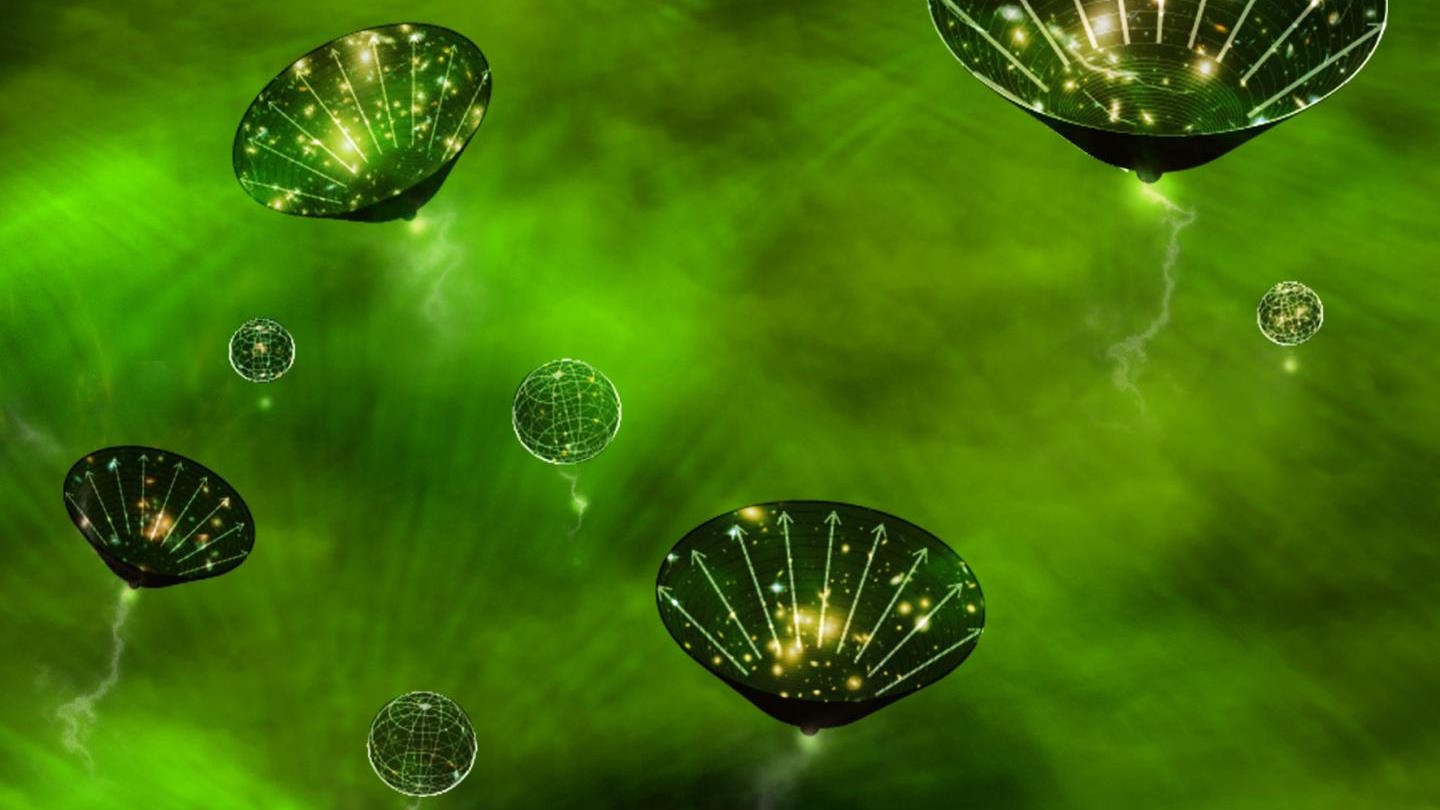Quantum mechanics disproves an exotic type of black hole

- Black holes are traditionally thought to require a large mass, but they can also be created by concentrating energy, as in the theoretical type of black hole called a “kugelblitz.”
- Recent research shows that quantum effects, specifically the Schwinger effect, prevent the formation of kugelblitze by causing energy to escape faster than it can be concentrated.
- Therefore, while general relativity allows for the possibility of kugelblitze, incorporating quantum mechanics rules them out.
Black holes are perhaps the best-known of the exotic cosmic citizens. Even the recipe is well-known: Take a large mass — perhaps four times as much as the Sun, or larger — and squash it down to tiny sizes, and, voila, you are the proud owner of a black hole.
It’s commonly thought that you need a lot of concentrated mass to make a black hole. But a more correct idea is that a black hole is a lot of concentrated energy. If true, this theoretically means that if you shine enough super-powerful lasers on one spot, the light energy could create a black hole. The name of a black hole made in this way is a kugelblitz (German for “ball of lightning.”) A recent paper in the journal Physical Review Letters claims to prove that a kugelblitz is not possible.
Kugelblitz
According to Einstein’s famous equation, E = mc2, energy and mass are equivalent. However, that statement is not quite correct. There is that c-squared parameter, which is the speed of light squared. In standard metric units, c-squared is an enormous number, about 1017. Thus, a small amount of mass is a huge energy. For example, a single gram of matter is equivalent to the energy released by the nuclear detonation at Hiroshima.
When you understand just how much energy is stored in ordinary matter, it becomes easier to see why astronomers have concluded that mass is what is needed to make black holes. Mass is just highly concentrated energy.
The centrality of energy, rather than mass, becomes more evident when you ask where the mass of ordinary matter comes from. Matter is made of atoms, consisting of protons, neutrons, and electrons. The mass of electrons is negligible compared to protons and neutrons (collectively called nucleons); thus mass is concentrated in nucleons.
Digging deeper, scientists have found that nucleons are made of smaller particles called quarks. However, when the mass of the quarks inside nucleons is added up, the sum is only about 2% of the mass of nucleons. The remaining 98% of nuclear mass is found in the motion of the quarks. Quarks move within nucleons at near the speed of light. This tremendous velocity results in a great deal of energy. In addition, super-strong forces are needed to hold the quarks inside nucleons. These super-strong forces result in even more energy.
So, we see that familiar mass is mostly nothing more than the motion and binding energy of quarks. Indeed, to a very real degree, all mass is nothing more than energy. And if mass is energy, and black holes are caused by concentrated mass, then it stands to reason that any sufficiently dense concentration of energy will result in a black hole. From this realization arose the idea that if one were to concentrate enough light energy in a small enough volume, you could make a black hole of a specific kind: a kugelblitz.
If you do a detailed calculation using Einstein’s general theory of relativity, the implications are clear: Kugelblitze (plural of kugelblitz) are theoretically real.
But general relativity is a quasi-classical theory, and it entirely ignores quantum effects. Given that quantum mechanics is needed to describe the world of the ultra-small, and black holes require the concentration of a large amount of energy into a small volume, any prediction of the existence of kugelblitze that ignores quantum effects is almost certainly invalid.
Enter quantum mechanics
So this is what a small group of scientists at the Universidad Complutense de Madrid and the University of Waterloo did. They studied how quantum mechanics affects the kugelblitze prediction.
One effect not included in general relativity theory is what is called the Schwinger effect. The Schwinger effect describes what happens when you concentrate a lot of electromagnetic energy in a small volume. When electromagnetic energy is very concentrated, it can transform itself into an electron and antimatter electron. Those particles can then escape the volume. If the rate of energy escape is larger than the rate of energy concentration, it sets a limit on just how much energy can be concentrated.
The authors show rather persuasively that at high energy density, the Schwinger effect dominates. Energy is lost faster than it can be added. For sizes ranging between 10-29 (much smaller than a proton) to 108 meters (somewhat smaller than the Sun), kugelblitze cannot be formed. Sizes smaller than those covered in the recent result approach the Planck scale – a size scale at which it is already known that all known laws of physics break down. Thus, any calculations of the existence of kugelblitze using general relativity on even smaller size scales are invalid.
On a larger scale, there are no known phenomena that can compress the required amount of energy in a volume the size of the Sun. So, the result seems quite definitive. While general relativity says that a kugelblitz can exist, when quantum effects are taken into consideration, kugelblitze are ruled out.
This observation will no doubt be distressing to fans of The Umbrella Academy, as kugelblitze are a central feature of the third season of the show. However, putting aside the disappointment of science fiction fans, the ability to merge general relativity and quantum effects is an important goal for physicists. This recent work joins Hawking radiation — the predicted radiation that slowly evaporates black holes — as a useful step forward.





